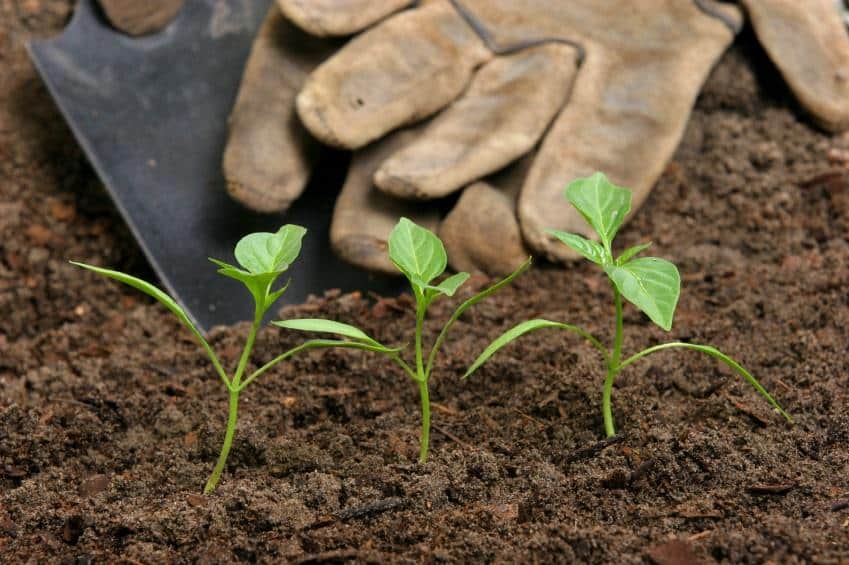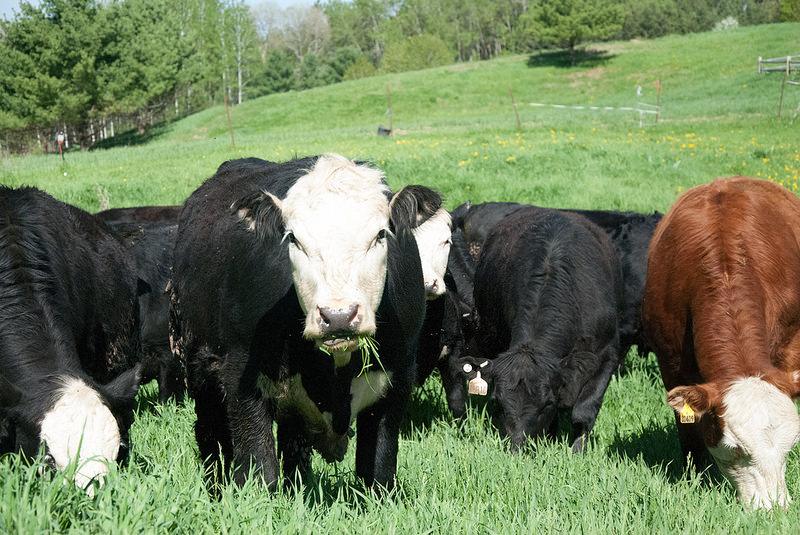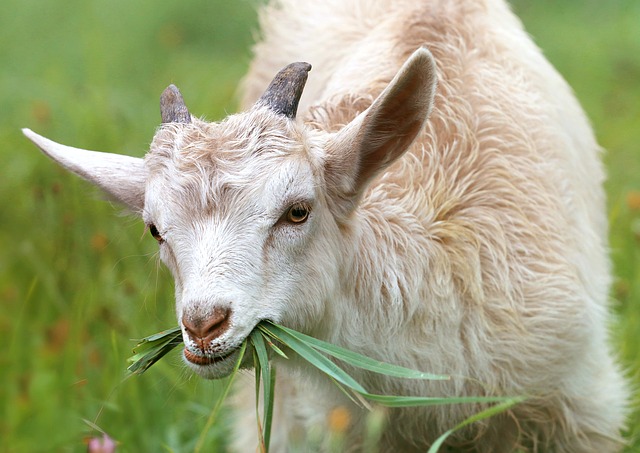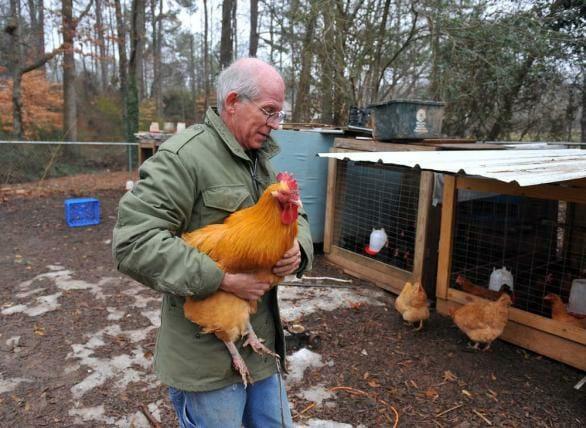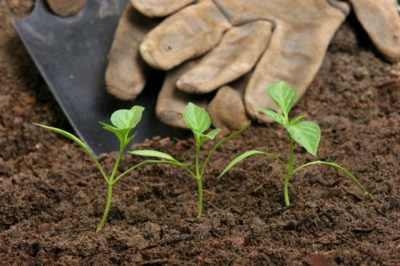 That yellow fluid we all flush down the toilet, it turns out, isn’t just useless “wastewater.”
That yellow fluid we all flush down the toilet, it turns out, isn’t just useless “wastewater.”
When Vermont environmentalists Kim Nace and Abraham Noe-Hays released their findings on the benefits of urine in agriculture earlier this year, farmers and gardeners started making a bee-line for their recycled pee. Nace and Hays head the Rich Earth Institute, a Brattleboro-based research facility that collects human urine to process into natural fertilizer. The pooled urine is given to a farmer who then sprinkles it on hay fields in place of synthetic fertilizers. The increase in yield, they found, was “dramatic.”
“We have more farmers who want urine brought to them than infrastructure to do it,” Nace told NPR’s The Salt.
The pilot project is the first accredited community-scale urine recycling program in the U.S. But “pee-cycling,” as it’s commonly called, has been around for centuries. We know it isn’t strange for farmers and gardeners to urinate in their compost pile. But on a large, community-wide scale, the process of diverting urine for fertilizer use has been documented all the way back to the 1860s. And it is still practiced in countries like Finland, France, Netherlands, Sweden and many developing countries around the world. In Amsterdam, the city’s utility company has a program called The Green Urine which collects urine from local residents to fertilize rooftop gardens across the city.
Nutrient Load
Our urine contains a majority of the excess nutrients secreted by our bodies. It has more than 3,000 compounds, three of which are highly beneficial to plants: nitrogen, potassium and phosphorous — substances commonly found in commercial fertilizers today.
Urine accounts for only 1 percent of the wastewater going into treatment facilities (imagine all the clean water needed to just flush it down our toilets, all going to waste!), yet it contains 88 percent of the nitrogen, 71 percent of the potassium and 61 percent of the phosphorous. Algae thrive on these; that’s why such nutrients, especially the nitrogen, are purposely removed from wastewater in a process called de-nitrification – a procedure that costs the government a huge amount of energy and resources.
Get Delicious, Nutrient-Dense Heirloom Seeds Here!
The level of nutrients in a person’s urine largely depends on his or her diet, gender, age and water intake. But studies in Sweden show that an adult’s urine has enough vitamins and minerals to fertilize 50-100 percent of the crops needed to feed one adult. Another report says one person’s urine would be enough to fertilize up to one-tenth of an acre of vegetables for an entire year. Urine is so potent and useful that it’s earned the current moniker “liquid gold.”
Common garden vegetables and fruit that can benefit most from urine are those that require high levels of nitrogen: corn, wheat, millet, sorghum, cabbage, lettuce, carrots, turnip, kale, chard and oranges.
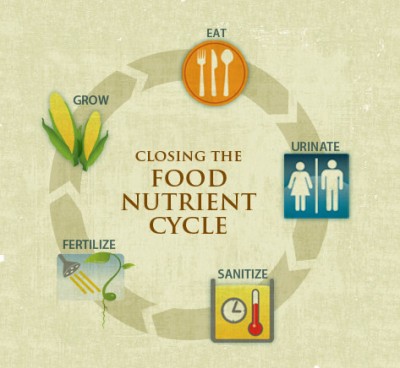
So, why buy fertilizer when you can make it?
Sanitation and Safety
Normally, fresh urine from a healthy person is sterile. Alex Wilson of BuildingGreen.com says any bacteria in urine – such as those from urinary tract infections – is usually killed by the ammonia in it in a short time. It’s the solid waste that carries most of the potential hazards.
“When most people think of creating fertilizer from animal waste, they think of manure. Composted cow manure is widely sold in garden centers. But there are actually far more nutrients in urine than fecal matter,” Wilson told Treehugger.com.
If you’re feeling under the weather and are concerned about the “purity” of your urine, don’t worry — it should still be okay for personal use. As they say, you can’t catch anything from your own fluids that you don’t already have. But as an extra precaution, you can pasteurize urine by storing it in a sealed container for one month in a room-temperature greenhouse, or by heating it for 30 minutes in a solar pasteurizer.
If using urine that’s not your own, or collecting some from folks outside your family, it should be sterilized, or else stored for 6 months before use so that any risk from disease-causing pathogens is eliminated. It’s also advised not to harvest your crops less than a month after you’ve fertilized them with urine. This is crucial especially if you eat your vegetables raw. Otherwise, just dispose of the questionable fluid into your compost pile, lawn, or mulched trees and shrubs.
Story continues below video
Medication like antibiotics and prescription drugs tend to go into our urine, so you may want to refrain from peecycling if you’re taking any. Vitamin supplements and the occasional antacid and aspirin shouldn’t hurt. Urine has to be diluted many times anyway before being used in the garden, so any trace of over-the-counter drugs should be minute and already negligible.
The Rich Earth Institute says re-using urine – even if it contains a trace amount of drugs – is superior than the current method of treating urine at sewage plants. Peecycling, the institute says, benefits bodies of water.
“If we spread the urine on agricultural land instead, the robust soil ecosystem has a chance to break down the drugs and biodegrade them over a much longer period of time, greatly reducing or eliminating their levels before they ever reach a body of water,” the institute says. “In this way, soil application is a great improvement over current practice. On the other hand, plants have the ability to absorb some pharmaceuticals, which could potentially affect people eating crops grown with urine. We plan to investigate pharmaceutical levels in crop plants and, if necessary, test methods of removing pharmaceuticals from urine before using it as a fertilizer.”
New Natural Fertilizer Doubles Garden Production!
One thing to watch out for, though, is salt. If you’re a heavy consumer of chips, fries and foods high in salt, consider cutting down on these as salt tends to find its way into our urine. Reducing salt in your diet would not only improve your health but also lower the salt level in your urine – and benefit your garden.
Free Fertilizer
Needless to say, urine shouldn’t be sprinkled directly onto edible crops. It has such high levels of nitrogen, salt and acidity that it should first be diluted before use in the garden. The dilution rate depends on a plant’s nitrogen needs, salt tolerance and condition of the soil. A standard maximum ratio is 4:1 (4 parts water to 1 part urine) for nitrogen-needy crops like corn (whose edible parts are covered anyway and are safely high above ground). Apply the urine only to the base, and work it quickly into the soil to avoid nitrogen loss as it converts and dissipates into ammonia gas. Do this every two weeks or as needed. Use a rate of 10:1 for fruiting vegetables like eggplants, peppers and tomatoes, or for leafy veggies like lettuce, spinach, cabbage and broccoli, likewise sprinkling only on the soil around the base. For plants that are in their early growth – tender seedlings and new transplants – use a rate of 20:1. Water down further – 30:1 – for potted plants that are sensitive to fertilizers and salt buildup.
Compost Accelerator
Don’t forget your compost! Urine can go straight into the bin or pile, as the uric acid in it will help speed up the decomposing process. Take note that urine is considered a “green” in composting, since it is high in nitrogen. So remember to mix sufficient amounts of carbon-rich matter like dry leaves, straw, sawdust or paper if you’re going to use urine in your compost.
Soil Enhancer
Late autumn to early winter is the best time to amend the soil in preparation for next season. Sprinkle urine in your empty or cleared-up garden beds — pure or diluted — then mulch with leaves, hay, grass clippings and fruit and vegetable peels. By springtime, you’ll have rich, fertile soil that could probably match commercial-grade potting mix.
For soil that has been mulched with carbon-rich material like wood chips or dried leaves, you can apply urine straight onto the mulch. It will buffer the high concentrations of nitrogen in your urine, and help break it down into a simpler form that your plants can easily use. Again, mixing and incorporating it into the mulch would prevent nitrogen loss as it converts into ammonia.
For comprehensive guidelines on how to use this local, renewable – and free – fertilizer in your garden, read this document by the World Health Organization.
Ladies, keep a chamber pot handy; and gentlemen, have a gallon jug within reach — or head straight for the compost.
What do you think? Would you use urine on your garden? Leave your reply in the section below:


